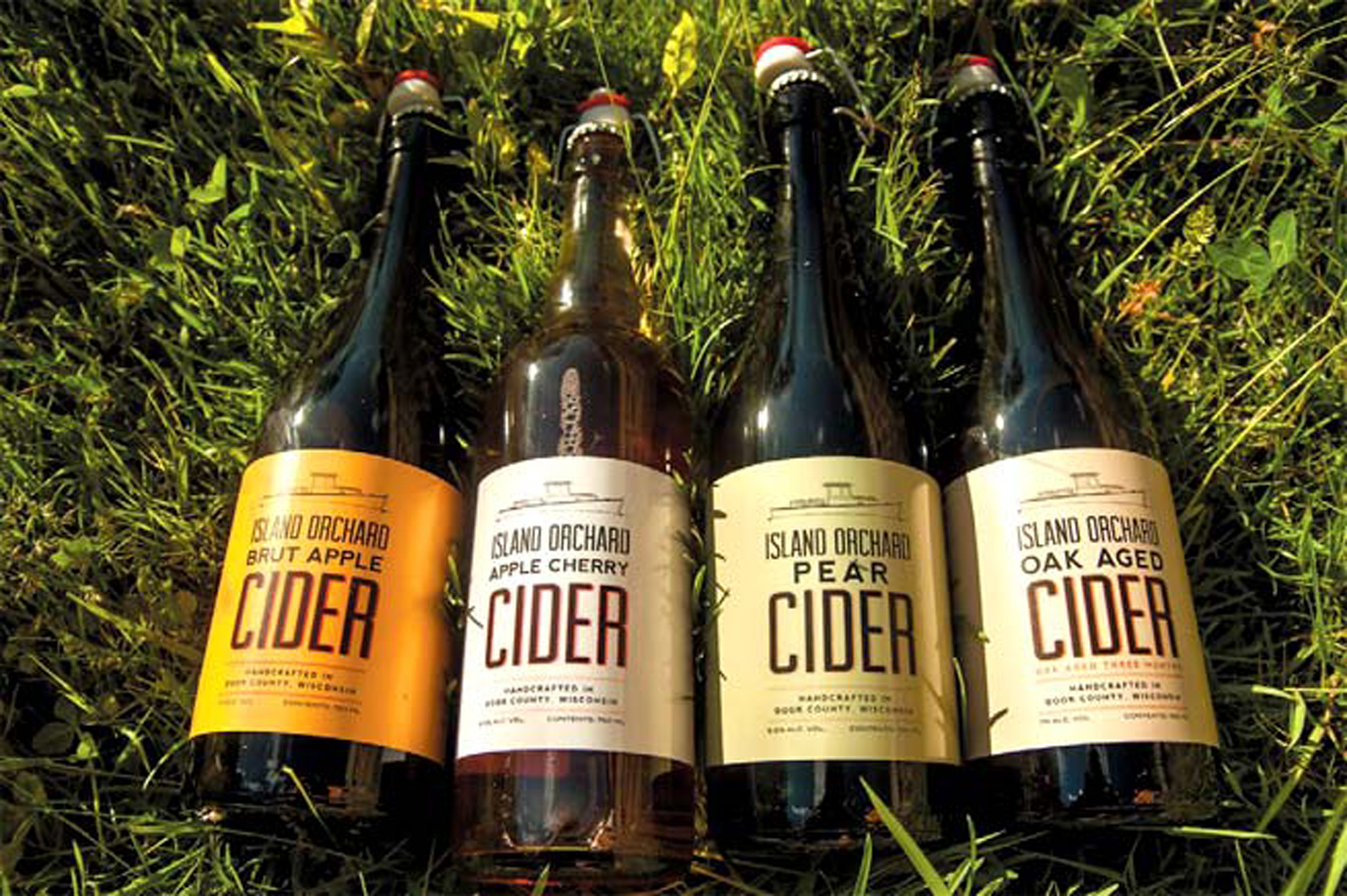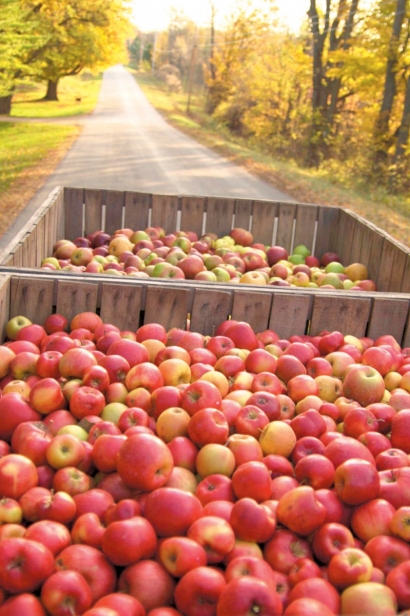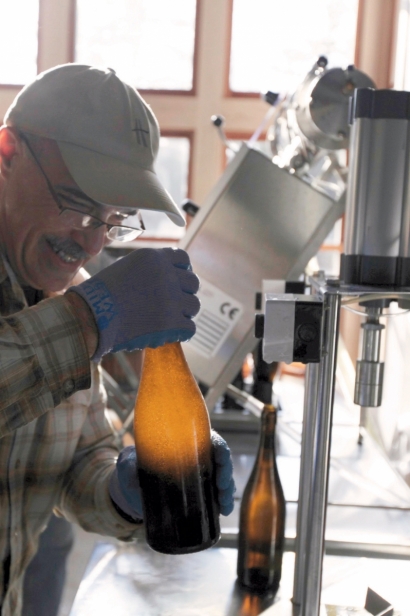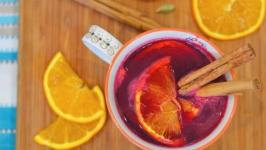From France to Wisconsin: Island Orchard Cider Proves Fruitful
Purman’s cider tapping into America’s taste
For Bob and Yannique Purman, discovering the ciders of France ten years ago was a revelation. The couple was visiting Yannique’s father in Brittany, a region known for its signature cidre brut, when they first tasted the ubiquitous beverage that is distinctly different from the mass-produced hard ciders the American palate has come to know.
As he tasted the drink that he describes as “champagne-like,” Bob said to his wife, “How extraordinary that we have nothing like this in the U.S.”
He was so taken with French cider that he immediately sought to know more. After research in Brittany and then in Normandy, he and Yannique became convinced that producing a French style cider in Wisconsin would not only be possible, but also ideal and eventually led to them launching Island Orchard Cider.
Cider was once the quintessential American beverage. Colonial men, women and children drank cider by the tankard, as it was a safe beverage and readily available, made from apple cultivars that colonists brought with them from England. The legendary Johnny Appleseed continued this trend westward as he sowed apple trees that were not the sweet-eating apples we buy at the market today, but rather crabapple- like varieties more suited for making cider.
The arrival of German immigrants who brought their beer-making culture shifted emphasis away from cider, but most American farms still made their own hard cider throughout the 19th century.
The death knell for American cider was Prohibition; many farmers burned or destroyed their apple orchards and replanted their land with sweet eating apples or other crops. After the Volstead Act was repealed, the rise of the American brewery made beer, a more stable and easily transported product — our national drink of choice.
But the Purmans, who joined the “cider revolution” before many of their counterparts, saw how a European style cider could appeal to the American palate.
Just before their trip to France, the Purmans had purchased a summer home on Washington Island, and there were some scrubby old apple trees on the property. As Bob’s interest in cider grew, they planted more cultivars, and Bob began small batch experimentation with the apples they grew.
“Wisconsin has the perfect cider-growing soil and climate,” said Bob, “like the French provinces of Brittany and Normandy.”
First and foremost, Bob sees cider production as an agricultural project. He developed a relationship with the Agricultural Research Station in Upstate New York that has led to the resurgence in cider-suited apple cultivars with names like Kingston Black, Esopus Spitzburg and Newton Pippen.
A self-taught apple grower, he enthusiastically describes the process of planting the varietals suited to cider making.
“We begin with rootstock from Russia that is ideal for a cold climate. Then we graft on the ‘scionwood’ from apple cultivars that produce the best fruit for a complex, delicious product.”
Just last year the Purmans grafted a couple hundred new trees in their orchard on Washington Island, which Bob calls “the heart of the business.”
Bob Purman comes by his love of fermentation naturally.
“As a boy, I remember my grandpa always having five or six carboys in his basement, bubbling away.” Yannique reports that many customers who visit Island Orchard’s Ellison Bay tasting room also have memories of their grandparents or great-grandparents making cider.
Island Orchard’s tasting room and production facility are housed in a hundred-year-old structure on Garrett Bay Road that was once a transfer building for a fishery and an orchard.
“We renovated the space and installed a geothermal heating and cooling system,” said Bob. The “closed system” cools the stainless steel tanks, which themselves generate heat during the act of fermentation. “In essence,” he said, “we are heating the building with the excess energy produced by making cider.”
The cider-making process is a seasonal affair that begins in late September when the first apples are harvested. Apples from the Purmans’ Washington Island orchard are combined with supplemental fruit from other Door County growers and pressed at Seaquist Orchards right down the road. Then Bob “pitches the yeast” and the six-week fermentation process begins. The cider is aged in stainless steel or oak for an additional four-to-six months before bottling. “We’re lucky to be able to do two full fermentations a year,” explained Bob, who enjoys how his work is dictated by nature’s calendar.
“Making cider means living the daily process,” he explained, whether that is experimenting with a new type of wild yeast or focusing on what the orchard needs. Recently, Bob borrowed a few hives of bumblebees from a neighboring farmer to be sure that his trees were being properly pollinated.
Island Orchard Cider has enjoyed remarkable success since its debut in 2011.
“We sold out completely in our first season,” said Yannique, who has observed that individual preferences for a certain type of Island Orchard Cider are immediate and personal. “Some people just really prefer our Brut Cider,” she said, “while other are drawn to the Pear Cider or the Apple Cherry.”
While Bob is most proud of his classic Brut Apple Cider — a dry, bitter-sharp drink with excellent body and character — he is also excited about a new product that Island Orchard will offer this fall.
“Our Royal Cider will be fortified with a distilled eau de vie, producing a beverage with a 17 or 18 percent alcohol content, similar to a fine sherry,” he said.
Local restaurants and retailers, from the Wickman House in Ellison Bay to Egg Harbor’s Main Street Market and beyond, also carry Island Orchard’s products, which offer thirsty travelers something unique to accompany a meal or a plate of Wisconsin cheese or sausage.
“Cider is also naturally gluten-free and has a lower alcohol content than wine,” said Yannique. “But most importantly, it’s just a good-tasting beverage.”
Although Island Orchard’s popularity and recognition is growing steadily, don’t look for a large regional or national presence any time soon.
“We’re building the business gradually and organically,” said Yannique, “just as we’re building the orchard.”
“I love the cyclical nature of the work,” said Bob. “I don’t see it as a business that needs to grow into some huge, lofty entity.
It’s enough that it can sustain us. Above all, it’s fun, and we take great pride in creating a handcrafted product.”








